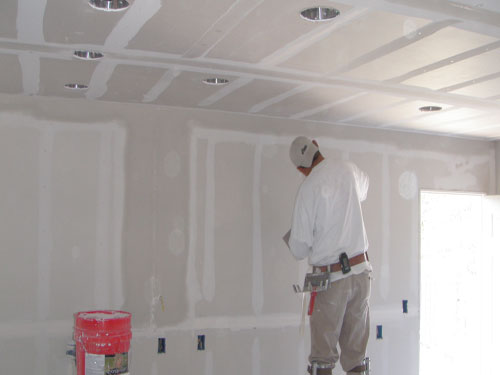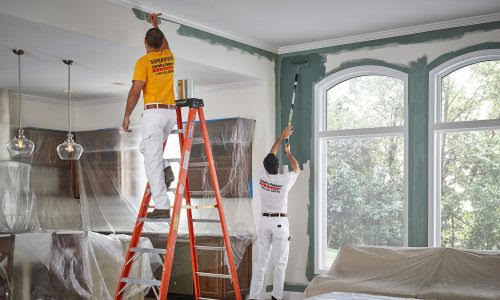After you’re done hanging drywall, and all the joints are taped as well as completed, you need 2 coats of paint to give the wall surface its final appearance. Before you use those, however, you need to secure the drywall and also mud with primer. If you paint over fresh drywall with regular wall surface paint, you’ll have a difficult time getting an even coating. You may get acceptable results by using self-priming wall paint.
Drywall Primer
Drywall primer is not the like paint. Its cornerstone is polyvinyl acetate (PVA), the same ingredient in carpenter’s adhesive. Its job is to seal the porous surface areas of the paper and dried joint substance as well as make them more responsive to brand-new paint. The PVA in the guide adheres better to incomplete drywall than does paint, and paint sticks far better to primer than it does to drywall. Guide comes in numerous grades, as well as a high-build selection fills out little nicks and ridges in the joints better than paint, giving the wall a smoother total look.

Two Coats of Paint
It’s appealing to try to save money by using 2 layers of regular latex wall paint as an option to using guide. The initial coat is bound to soak in, because the latex binder isn’t as strong as PVA. It additionally does not develop the thin, sticky film that PVA does, so the second layer is likewise likely to saturate right into the porous joint compound. The result is an irregular paint job that will most likely need a 3rd layer. Paint is extra costly than guide, so you haven’t saved any kind of cash by going this course. Rather, you possibly will end up investing extra.
Self-Priming Paint Vs. Tinted Guide
Self-priming paints are designed to aid you prevent paint three coats to get back at coverage. They have the same binding material as primer– PVA– yet likewise adequate solids to construct a coating in two layers. If you like to make use of a specialized paint, however, or a paint that you already have around the house, you can simulate a layer of self-priming paint by adding color to a high-build guide. The colored guide will not be the same shade as the overcoat, but it should be close sufficient to make sure that one layer of wall surface paint will end up the task.
When You Required a Guide
Particular circumstances ask for a guide as opposed to a self-priming paint. One of these is when you are painting over tarnished or water-damaged drywall. You need a high-solids primer to prevent bleed-through and also irregular coloring. You should likewise prime drywall before hanging wallpaper on it. The primer seals the paper and also joint compound to make sure that the wallpaper adhesive does not soak in and dry out. A primer is also beneficial when you’re repainting a wall surface that has a gloss layer. Applying primer after deglossing the paint with trisodium phosphate ensures that your overcoat will certainly adhere.

